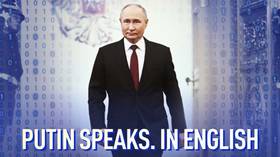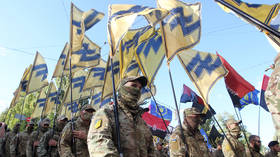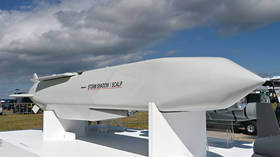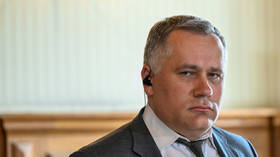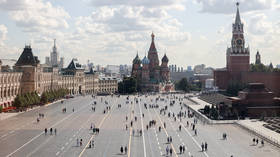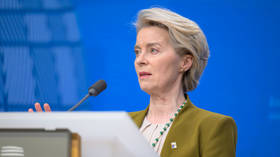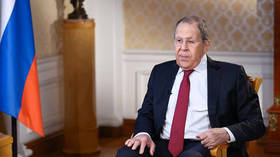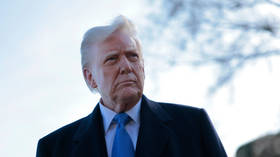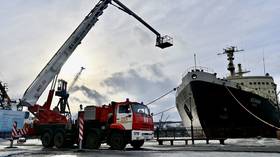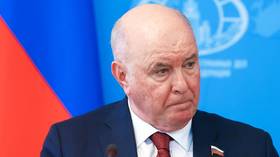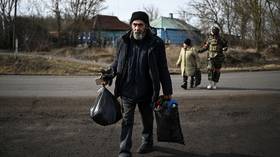Zelensky’s ‘Victory plan’: The Ukrainian leader knows the game is up

Ukraine's Vladimir Zelensky has finally unveiled his ‘victory plan’ which is supposed to help Kiev win the war against Russia. Ukrainians themselves were the last to learn the details, but now it has been completely disclosed, except for a few classified points.
And it's probably not going to go down in history as a substantial document.
Zelensky demanded that Western powers endorse his plan within three months. However, the ‘victory plan’ seems too far fetched for his backers to approve.
Point one: NATO membership
The first point states that Ukraine must receive an immediate invitation to join NATO, even as the conflict continues. While the bloc's new Secretary General Mark Rutte insists that Kiev is likely to join at some point in the future, he has been more restrained about commenting on Zelensky’s proposals. “That doesn’t mean that I here can say I support the whole plan [...] there are many issues,” he said.
In fact, two issues stand out. Firstly, Ukraine is currently engaged in active combat on its own territory. This would present a significant dilemma for NATO if it were to be admitted. Strangely enough, the bloc’s own charter doesn't contain an obligation to immediately attack the adversary of one of its members. Article 5 states that it “will assist the Party or Parties so attacked by taking forthwith, individually and in concert with the other Parties, such action as it deems necessary, including the use of armed force.”
In other words, NATO would not be immediately obliged to fight for Ukraine should Kiev accede. However, if a NATO member can be attacked without consequences, it's going to look like a paper tiger. This is where the real problem lies: Western countries are doing everything they can to avoid a direct confrontation with Russia, and admitting Kiev dramatically increases the risk of such a clash – or, at the very least, severely damages their credibility. Meanwhile, the West is already providing military aid, financial support, and training to Ukrainian troops without directly involving NATO.
As for Russia, it will not tolerate Ukraine’s membership of any Western military bloc. In fact, one of the initial reasons for the February 2022 military offensive was because Moscow feared that Kiev could join such an alliance. Thus, accepting the first point of Zelensky’s plan would symbolize the end of any potential diplomatic solution, forcing all parties to recognize that negotiations are not a possibility.
Point two: Strikes deep into Russia
The second point of the plan entails attacking internationally recognized Russian territory. Zelensky aims to secure approval for using Western weapons to strike deep inside Russia, and expects Western defense systems to neutralize Russian missiles and drones.
Some of Zelensky’s proposed targets have recently become known. They include Russian munitions factories in Tambov, Kazan, and Perm; airfields; command centers; FSB facilities; and military-industrial complex facilities, including those in St. Petersburg and Moscow.
At this point, two critical questions arise. The first is predictable – how would Russia respond? Such strikes would undoubtedly be viewed as a radical escalation of the conflict and could prompt retaliatory attacks not only on Ukraine but also on its key defense factories, which aren’t located solely inside the country. This is understandable, since escalation is always a double-edged sword.
The second question is quite pragmatic: does Ukraine have enough missiles to hit all these targets? While it has already attacked various facilities in Russia with its own missiles, the operations of the Russian military-industrial complex and economy have not been significantly disrupted.
Over the course of the war, Russian missile defense systems have become a lot more effective; for example, they intercepted ATACMS missiles launched at the Crimean Bridge in 2024. However, Zelensky’s proposed campaign would require hundreds of missiles that may not eventually be supplied to Ukraine while there are also plenty of legitimate targets on territory where such strikes are allowed.
Point three: Involving the West in the war
The third point aims to directly involve the West in the conflict. It proposes to “deploy a comprehensive non-nuclear strategic deterrence package on [Ukrainian] soil” to keep Russia at bay. The essence of this plan is quite simple: to draw the West into direct combat against Russia or, at the very least, to raise the spectre of such a possibility.
We may recall that historically the strategy of doing anything to scare an opponent has often backfired. The adversary doesn't always run away in fear and the conflict can escalate in ways no one anticipated. The desire to avoid a direct military confrontation between Russia and NATO remains a key imperative for the West in this war.
It’s important to note the fundamental differences between the Russian and Western political leadership when it comes to conflict management. The West operates on the principle of increasing costs for the opponent: it believes that at some point, the adversary (in this case, Russia) will deem the conflict too expensive and retreat.
Conversely, Russian leaders respond to perceived threats: their reaction to rising costs may be sluggish or even absent as long as those costs are manageable, but certain actions can be viewed as existential threats that demand an overwhelming response. The presence of large Western military forces in Ukraine would certainly fall into the latter category.
It’s also important to remember that, for Russia, the Ukraine conflict holds far greater significance than it does for the West. Crimea is a part of Russia’s heartland, while Donbass has spilled its blood in order to be recognized as part of Russia. We are talking about millions of people who are unconditionally loyal to Russia, are ethnically Russian and identify themselves as such. This makes it clear why Zelensky would want to draw the West into the conflict, but going down that road could lead to WWIII – and that’s no joke or scare tactic.
Point four: Sell the country to the West
The fourth point of Zelensky’s plan is less apocalyptic. He invites Western Europe and the US to invest in Ukraine’s mineral extraction facilities and exploit the country economically. This seems like an attempt to somehow engage the West financially, since right now, Ukraine is primarily consuming funds, and has nearly stopped generating revenue.
However, if this point is part of the ‘victory plan’, it entails deploying foreign specialists and equipment to the war zone, complete with all the associated risks. Apparently, Zelensky hopes to attract some desperate “cowboys” who would be willing to pour money into Ukraine even as factories may be cut off from power at any moment, or even hit by missiles. It’s unclear how Zelensky plans to find investors in such conditions. While there may be certain reasons for the Ukrainian president to feel optimistic about this, the Western media remains skeptical.
Point five: Deprive the US of control over Western Europe
Finally, the fifth point of the plan is quite intriguing: Zelensky suggests that the Armed Forces of Ukraine may guarantee the security of Western Europe in the future, and even replace US troops in the region.
This isn’t entirely foolish — after all, Ukraine is currently one of the only countries in the world aside from Russia with firsthand experience of modern warfare against an equally powerful adversary. This isn’t the same as battling a weak, crumbling army like Saddam Hussein’s troops, or insurgents in Afghanistan.
However, for the US, the military is a tool of political dominance, and it’s hard to imagine that it would hand that power over to Ukraine. Not to mention that as a partner, Kiev is extremely unreliable – it has often disregarded international obligations, so entrusting one’s security to such actors would be totally reckless.
***
Overall, Zelensky’s plan leaves a strange impression. Essentially, the Ukrainian leader is asking NATO to fight for his country on his behalf. Every point of the plan seeks to deepen the West’s involvement in the conflict, cutting off any possibility for compromise or withdrawal. Zelensky apparently wants to initiate a “hot” conflict between Russia and the West, which could even escalate to a nuclear confrontation. In other words, he’s urging the West to reconsider its fundamental assumptions regarding the conflict.
Why is Zelensky taking such seemingly bizarre steps? Certainly, Ukraine is in a desperate situation, and he hopes that at the very least, he would be able to secure some financial aid without resorting to these drastic measures. This plan can be seen as a sign of Ukraine’s willingness to continue fighting, and simultaneously, a desperate call for help. The state-of-play on the battlefield for Ukraine is very difficult, and both its economy and energy sectors are teetering on the brink of collapse. So Zelensky will do everything in his power to extract maximum benefit from the situation and seek any possible assistance.
However, if this radical plan fails to win approval, it might lay the groundwork for separate negotiations with Russia. After all, it is clear that the West was never willing to die for Ukraine.
